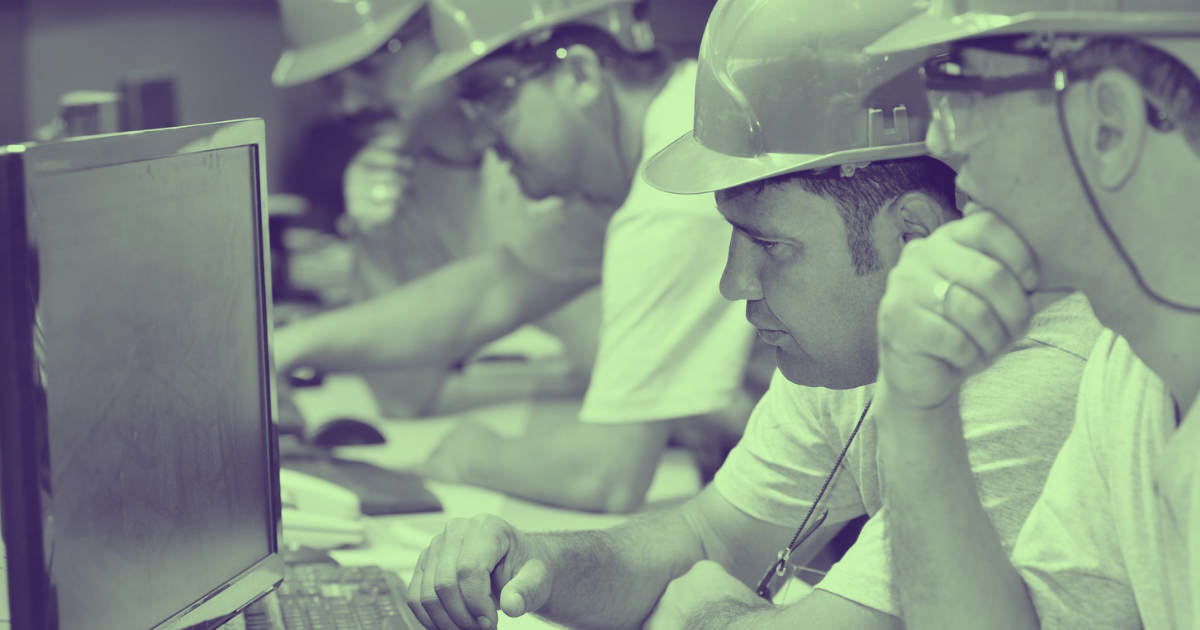
Every year, construction companies lose billions of dollars due to poor disorganized processes, mismanagement, and lack of real-time data.
Yet, many construction teams still rely on outdated methods, making decisions based on guesswork instead of data. The result? 20% longer project timelines, up to 80% budget overruns, and workforce inefficiencies that drain profits.
Think it won’t happen to your project? Here’s what could go wrong if you don’t track the right metrics: Missed deadlines, runaway budgets, safety violations, and costly rework!
Failing to track these metrics puts all your projects at risk, not to mention revenue and profitability. If you want to win more business and drive more revenue, it's time to start tracking the right metrics before it’s too late.
The right construction project management software can bridge these gaps by providing real-time insights, automating reporting, and streamlining workflows. Digital solutions help field teams and back-office personnel stay aligned, ensuring that every decision is backed by accurate data, keeping projects on schedule, workers safe, and budgets under control.
Essential Construction Management Metrics to Track
1. Project Schedule Adherence - Importance of Tracking Timelines
Ever had a project that seemed to drag on forever? It starts with a minor delay, then another, and suddenly, the entire schedule is off track. Missed deadlines don’t just cause minor inconveniences—they impact everything from labor costs to material availability and client satisfaction. When schedules slip, budgets often follow, leading to financial strain and strained relationships. Keeping a firm grip on project timelines ensures teams stay on track, reduces downtime, and improves overall project efficiency.
What to Watch:
- Progress Tracking: Helps identify potential delays early and rectify them to keep your overall project on track.
- Milestone Completion: Ensures critical phases are completed on time. These milestones will mean the team gets to jump on the next steps in required time.
How Technology Helps:
Budget overruns are one of the biggest risks in construction. Costs can spiral out of control due to material price fluctuations, unexpected labor expenses, and project delays. If budgets aren’t monitored properly, minor financial bumps can snowball into massive overruns, putting project profitability at risk. Effectively managing costs ensures projects remain financially viable and that stakeholders are confident in their investments.
2. Budget and Cost Control - Monitoring Project Costs
Cost overruns are one of the biggest challenges in construction. A staggering 85% of construction projects exceed their budget. If these stats hit too close to home, you might need construction tracking tools to help you stay on top of your costs, manage your budget, and optimize spending using continuous monitoring.
What to Watch:
- Budget vs. Actual Spending: Helps prevent financial surprises. This data is not only important for your ongoing project, but it also helps analyze the overall financial health of your company.
- Cost Efficiency: Measures cost performance over time. Historical data are often helpful in figuring out cost efficiencies or removing losses.
How Technology Helps:
Modern tools can track all project costs in real-time, ensuring that spending aligns with the budget while providing automated cost forecasting to prevent unexpected expenses.
3. Labor Productivity and Workforce Utilization
A skilled workforce is the backbone of any construction project, but how do you ensure that labor is being used efficiently? Delays caused by underperformance, scheduling conflicts, or skill mismatches can drive up costs, create bottlenecks, and push timelines out. Proper workforce utilization means ensuring that every worker is assigned tasks that align with their expertise, reducing downtime, and increasing productivity.
What to Watch:
- Workforce Productivity: Compares work completed to labor hours. This gives you a powerful insight into the project estimation process along with your labor efficiency.
- Resource Allocation: Identifies underperforming teams or resource gaps. By nature, or complexity, some projects may require more time than others in your portfolio; however, chronic misallocation of resources and/or people power might be a symptom that your current labor/resource process is broken. Greater visibility into resources and labor across all projects can help pinpoint where to fix that chronic issue.
How Technology Helps:
With customizable workflows, digital tools track labor hours, productivity trends, and resource allocation in real-time, allowing managers to optimize workforce performance.
4. Equipment and Resource Utilization - Monitoring Usage
Construction equipment is expensive, and the inefficient use of these resources leads to significant financial losses. Owned equipment, sitting idle, means wasted investment; meanwhile, overused and under-serviced equipment without proper maintenance can lead to unexpected breakdowns and costly repairs. Keeping track of how these resources are being used and serviced ensures that equipment is allocated efficiently and maintained properly.
What to Watch:
- Machine Downtime: Identifies idle equipment that could be repurposed.
- Usage Rates: Ensures equipment is being used effectively.
How Technology Helps:
Digital solutions enable real-time tracking of equipment usage, maintenance needs, and asset allocation, pinpointing when equipment and resources need servicing and preventing unnecessary downtime and repair costs.
5. Prioritizing Safety and Compliance
A single safety incident can have serious consequences—project delays, financial penalties, and, most importantly, harm to workers. Construction sites are inherently risky environments, and tracking safety metrics can help reduce that risk and prevent accidents before they happen. Maintaining compliance with safety regulations also protects businesses from legal and reputational issues and ensures smooth project progress.
What to Watch:
- Incident Reporting: Helps assess workplace safety.
- Regulatory Compliance: Ensures adherence to safety standards.
How Technology Helps:
Automated safety tracking ensures that incident reports, audits, and compliance requirements are met efficiently, helping companies maintain a strong safety culture.
6. Maintaining Quality Standards
According to a study conducted by the Construction Industry Institute (CII), defect-related rework accounts for up to 9% of total project costs.
Rework is one of the most expensive problems in construction. Poor workmanship, miscommunication, or the use of subpar materials can result in defects that require costly corrections. Ensuring high-quality work from the start not only saves time and money but also enhances the reputation of the construction company.
What to Watch:
- Rework Rates: Tracks the percentage of work that must be redone.
- First-Time Quality (FTQ): Measures how often tasks are completed correctly the first time.
How Technology Helps:
With automated punch lists and defect tracking, digital solutions ensure quality control issues are identified and resolved swiftly
Conclusion
Tracking these key metrics is the difference between a successful construction project and one plagued by delays, budget overruns, and inefficiencies. Leveraging modern construction management solutions streamlines operations, gives access to real-time insights, and enhances data-driven decision-making that boosts profitability, promotes safety, and keeps projects on track.




